Cover
Contents
Preface
1 Overview of MIMO communications
1.1 What is MIMO?
1.2 History of MIMO
1.3 Smart antennas vs MIMO
1.4 Single-user and multi-user MIMO
1.5 Introduction to spatial diversity
1.5.1 The concept of diversity
1.5.2 Receive and transmit diversity
1.5.3 Common diversity performance metrics
1.5.4 Relationship between diversity order and diversity gain
1.6 Introduction to spatial multiplexing
1.6.1 The concept of spatial multiplexing
1.7 Open- and closed-loop MIMO
1.8 The practical use of MIMO
1.8.1 Commercial MIMO implementations
1.8.2 Measured MIMO performance
1.9 Review of matrices
1.9.1 Basic definitions
1.9.2 Theorems and properties
Problems
2 The MIMO capacity formula
2.1 What is information?
2.2 Entropy
2.3 Mutual information
2.4 Definition of SISO capacity
2.5 Definition of MIMO capacity
2.5.1 MIMO system model
2.5.2 Capacity
2.6 Evaluating H(z)
2.7 Evaluating H(r)
2.8 Final result
2.8.1 Real signals
2.8.2 Complex signals
Problems
3 Applications of the MIMO capacity formula
3.1 MIMO capacity under the CSIR assumption
3.2 Eigen-channels and channel rank
3.3 Optimum distribution of channel eigenvalues
3.4 Eigenbeamforming
3.5 Optimal allocation of power in eigenbeamforming
3.5.1 The waterfilling algorithm
3.5.2 Discussion of the waterfilling algorithm
3.6 Single-mode eigenbeamforming
3.7 Performance comparison
3.7.1 Results for Nr ≥ Nt
3.7.2 Results for Nt > Nr
3.8 Capacities of SIMO and MISO channels
3.8.1 SIMO capacity
3.8.2 MISO capacity
3.9 Capacity of random channels
3.9.1 Definition of Hw
3.9.2 Capacity of an Hw channel for large N
3.9.3 Ergodic capacity
3.9.4 Outage capacity
Problems
4 RF propagation
4.1 Phenomenology of multipath channels
4.2 Power law propagation
4.3 Impulse response of a multipath channel
4.4 Intrinsic multipath channel parameters
4.4.1 Parameters related to τ
4.4.2 Parameters related to t
4.5 Classes of multipath channels
4.5.1 Flat fading
4.5.2 Frequency-selective fading
4.5.3 Slow and fast fading
4.6 Statistics of small-scale fading
4.6.1 Rayleigh fading
4.6.2 Rician fading
Problems
5 MIMO channel models
5.1 MIMO channels in LOS geometry
5.2 General channel model with correlation
5.3 Kronecker channel model
5.4 Impact of antenna correlation on MIMO capacity
5.5 Dependence of Rt and Rr on antenna spacing and scattering angle
5.6 Pinhole scattering
5.7 Line-of-sight channel model
Problems
6 Alamouti coding
6.1 Maximal ratio receive combining (MRRC)
6.2 Challenges with achieving transmit diversity
6.3 2 x 1 Alamouti coding
6.4 2 x Nr Alamouti coding
6.4.1 The 2 x 2 case
6.4.2 The 2 x Nr case
6.5 Maximum likelihood demodulation in MRRC and Alamouti receivers
6.6 Performance results
6.6.1 Theoretical performance analysis
6.6.2 Simulating Alamouti and MRRC systems
6.6.3 Results
Problems
7 Space-time coding
7.1 Space-time coding introduction
7.1.1 Definition of STBC code rate
7.1.2 Spectral efficiency of a STBC
7.1.3 A taxonomy of space-time codes
7.2 Space-time code design criteria
7.2.1 General pairwise error probability expression
7.2.2 Pairwise error probability in Rayleigh fading
7.2.3 Pairwise error probability in Rician fading
7.2.4 Summary of design criteria
7.3 Orthogonal space-time block codes
7.3.1 Real, square OSTBCs
7.3.2 Real, non-square OSTBCs
7.3.3 Complex OSTBCs
7.3.4 Decoding OSTBCs
7.3.5 Simulating OSTBC performance
7.3.6 OSTBC performance results
7.4 Space-time trellis codes
7.4.1 STTC encoding
7.4.2 STTC performance results
Problems
8 Spatial multiplexing
8.1 Overview of spatial multiplexing
8.2 BLAST encoding architectures
8.2.1 Vertical-BLAST (V-BLAST)
8.2.2 Horizontal-BLAST (H-BLAST)
8.2.3 Diagonal-BLAST (D-BLAST)
8.3 Demultiplexing methods for H-BLAST and V-BLAST
8.3.1 Zero-forcing (ZF)
8.3.2 Zero-forcing with interference cancellation (ZF-IC)
8.3.3 Linear minimum mean square detection (LMMSE)
8.3.4 LMMSE with interference cancellation (LMMSE-IC)
8.3.5 BLAST performance results
8.3.6 Comparison of ZF and LMMSE at large SNR
8.4 Multi-group space-time coded modulation (MGSTC)
8.4.1 The MGSTC encoder structure
8.4.2 Nomenclature
8.4.3 MGSTC decoding
8.4.4 Group-dependent diversity
8.4.5 MGSTC performance results
Problems
9 Broadband MIMO
9.1 Flat and frequency-selective fading
9.2 Strategies for coping with frequency-selective fading
9.2.1 Exploiting frequency-selective fading
9.2.2 Combating frequency-selective fading
9.3 Conventional OFDM
9.4 MIMO OFDM
9.5 OFDMA
9.6 Space-frequency block coding (SFBC)
Problems
10 Channel estimation
10.1 Introduction
10.2 Pilot allocation strategies
10.2.1 Narrowband MIMO channels
10.2.2 Broadband MIMO channels
10.2.3 Designing pilot spacing
10.2.4 Spatial pilot allocation strategies
10.3 Narrowband MIMO channel estimation
10.3.1 Maximum likelihood channel estimation
10.3.2 Least squares channel estimation
10.3.3 Linear minimum mean square channel estimation
10.3.4 Choosing pilot signals
10.3.5 Narrowband CE performance
10.4 Broadband MIMO channel estimation
10.4.1 Frequency-domain channel estimation
10.4.2 Time-frequency interpolation
Problems
11 Practical MIMO examples
11.1 WiFi
11.1.1 Overview of IEEE 802.11n
11.1.2 802.11n packet structure
11.1.3 802.11n HT transmitter architecture
11.1.4 Space-time block coding in 802.11n
11.1.5 OFDM in 802.11n
11.1.6 Channel estimation
11.1.7 Modulation and coding schemes in 802.11n
11.2 LTE
11.2.1 Overview and history
11.2.2 LTE waveform structure
11.2.3 LTE transmitter block diagrams
11.2.4 DL transmit diversity
11.2.5 Spatial multiplexing
11.2.6 LTE data rates
Problems
Appendices
A MIMO system equation normalization
B Proof of theorem 5.2
C Derivation of Eq. 7.9
D Maximum likelihood decoding rules for selected OSTBCs
E Derivation of Eq. 8.68
F Parameters for the non-unequal HT modulation and coding schemes in IEEE 802.11n
References
Index
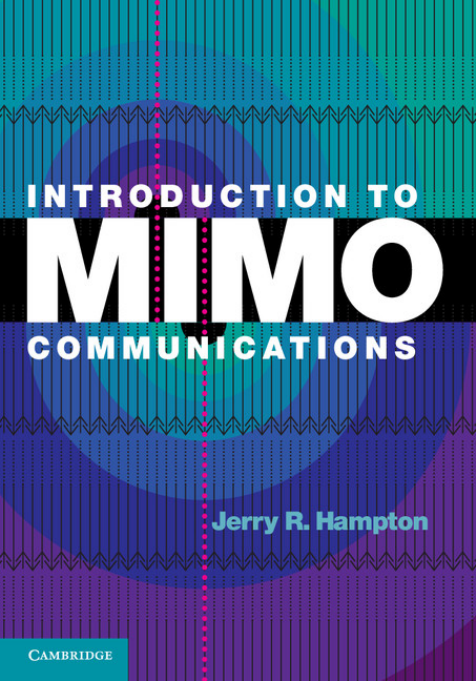


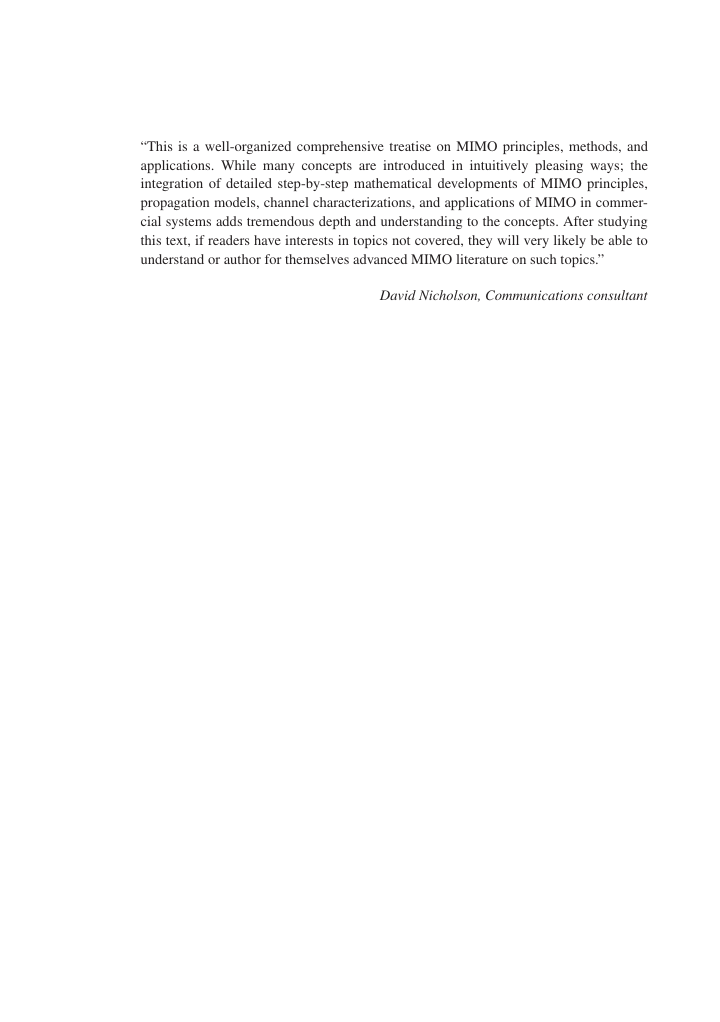
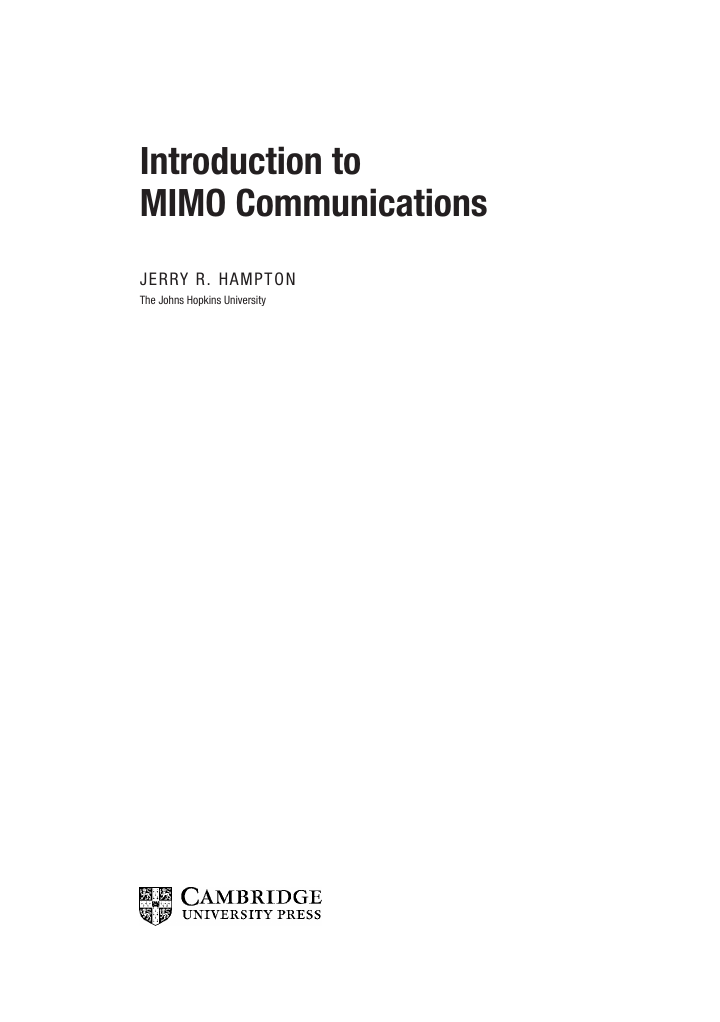
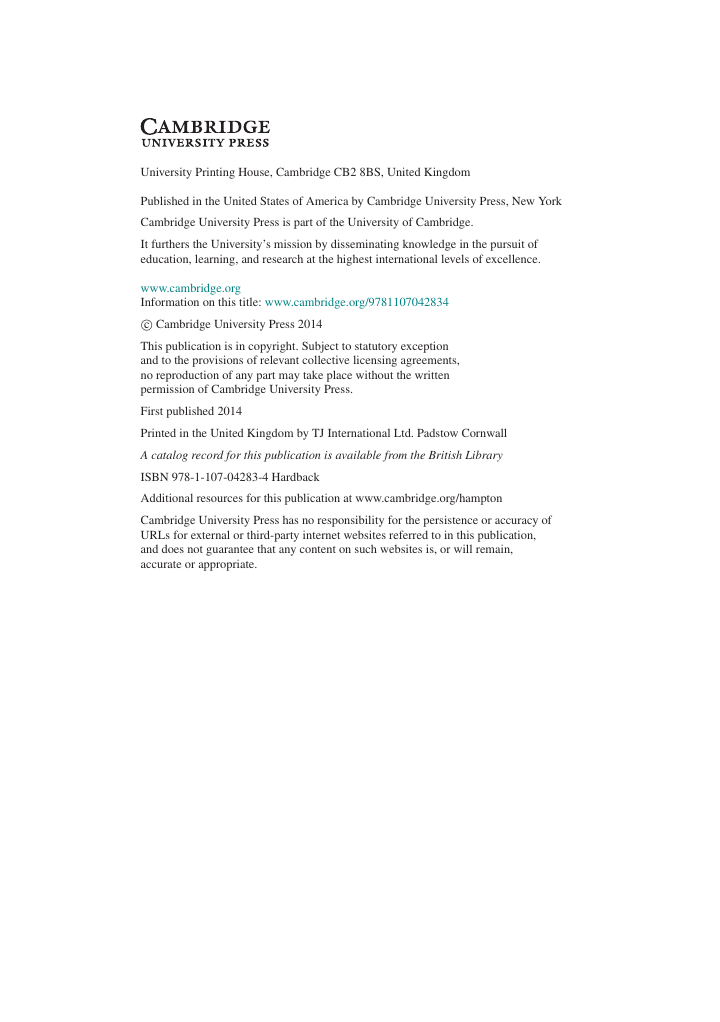
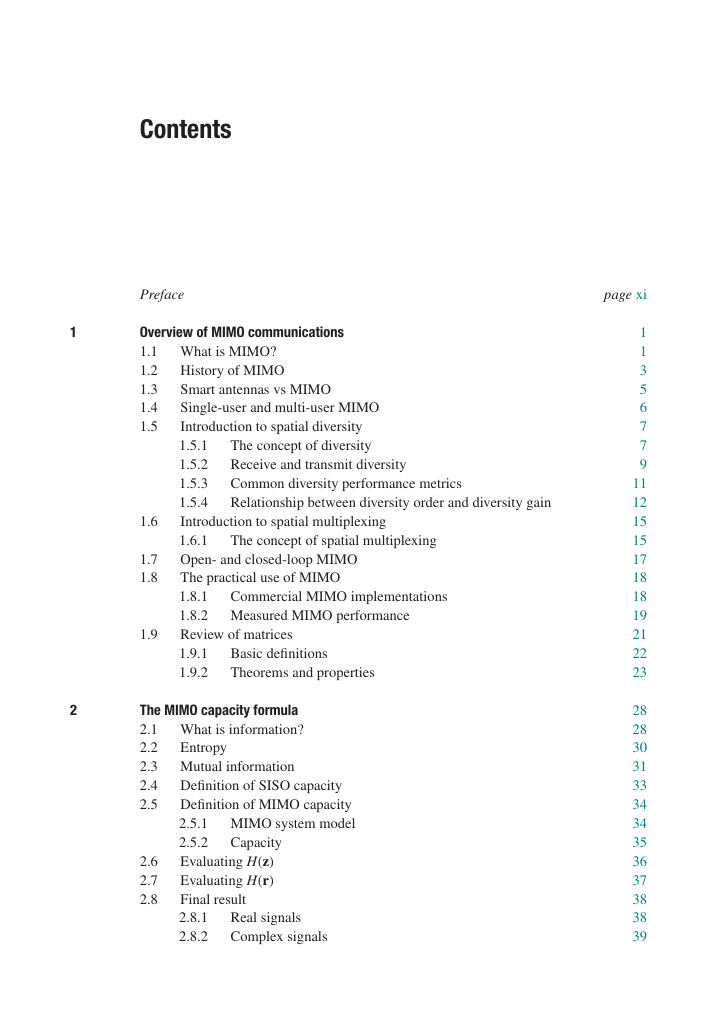









 2023年江西萍乡中考道德与法治真题及答案.doc
2023年江西萍乡中考道德与法治真题及答案.doc 2012年重庆南川中考生物真题及答案.doc
2012年重庆南川中考生物真题及答案.doc 2013年江西师范大学地理学综合及文艺理论基础考研真题.doc
2013年江西师范大学地理学综合及文艺理论基础考研真题.doc 2020年四川甘孜小升初语文真题及答案I卷.doc
2020年四川甘孜小升初语文真题及答案I卷.doc 2020年注册岩土工程师专业基础考试真题及答案.doc
2020年注册岩土工程师专业基础考试真题及答案.doc 2023-2024学年福建省厦门市九年级上学期数学月考试题及答案.doc
2023-2024学年福建省厦门市九年级上学期数学月考试题及答案.doc 2021-2022学年辽宁省沈阳市大东区九年级上学期语文期末试题及答案.doc
2021-2022学年辽宁省沈阳市大东区九年级上学期语文期末试题及答案.doc 2022-2023学年北京东城区初三第一学期物理期末试卷及答案.doc
2022-2023学年北京东城区初三第一学期物理期末试卷及答案.doc 2018上半年江西教师资格初中地理学科知识与教学能力真题及答案.doc
2018上半年江西教师资格初中地理学科知识与教学能力真题及答案.doc 2012年河北国家公务员申论考试真题及答案-省级.doc
2012年河北国家公务员申论考试真题及答案-省级.doc 2020-2021学年江苏省扬州市江都区邵樊片九年级上学期数学第一次质量检测试题及答案.doc
2020-2021学年江苏省扬州市江都区邵樊片九年级上学期数学第一次质量检测试题及答案.doc 2022下半年黑龙江教师资格证中学综合素质真题及答案.doc
2022下半年黑龙江教师资格证中学综合素质真题及答案.doc